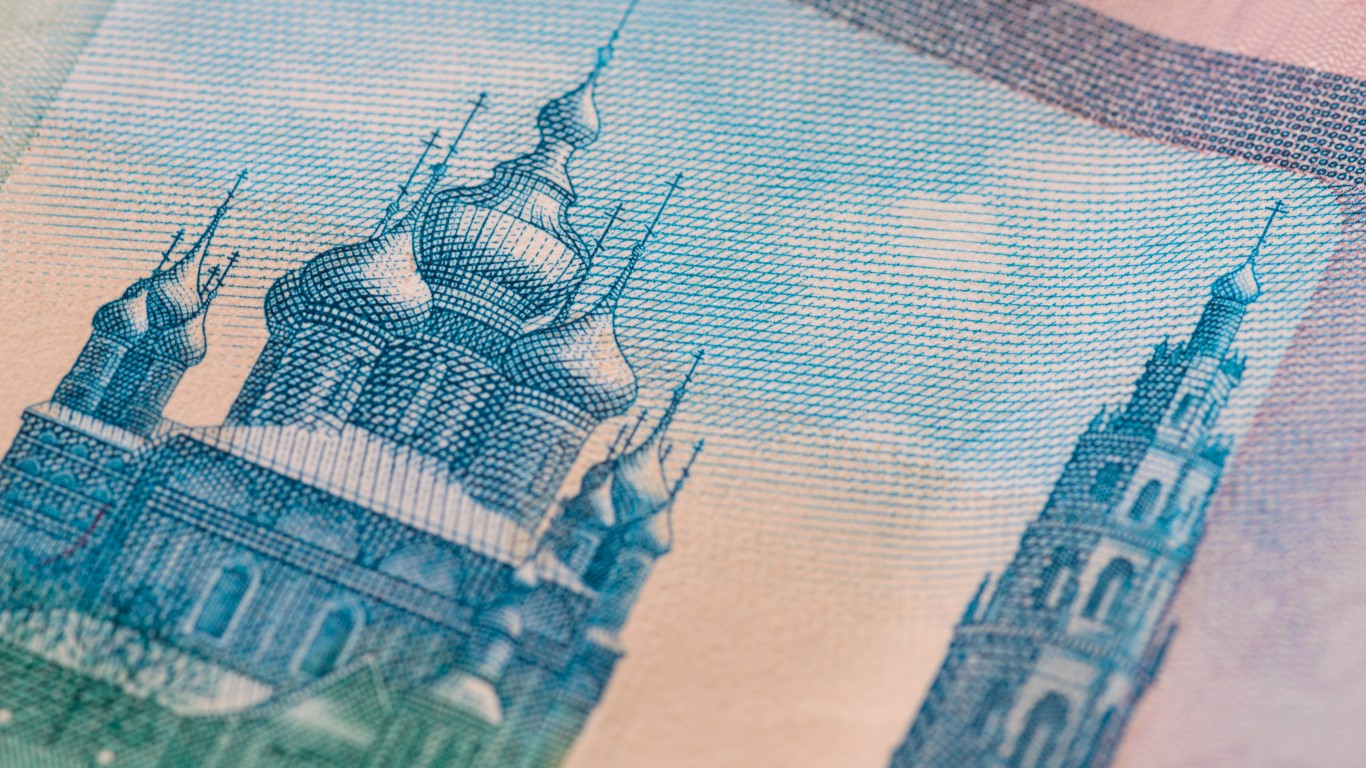Investing
Russia's Central Bank Scrambles to Raise Interest Rates as the Ruble Sinks

Published:
Last Updated:

Russia’s Central Bank has made an emergency interest rate hike of 3.5 percentage points to combat inflation and strengthen the ruble. This decision follows the ruble’s recent decline to its lowest value against the US dollar since the early stages of the war with Ukraine.
On Monday, Russia’s Central Bank scheduled an emergency meeting to address the declining value of the ruble. The move came after the currency fell past the psychological level of 100 to the dollar on Monday morning, extending its rapid depreciation that has been ongoing this year.
Initially, the central bank stated that the ruble’s decline did not threaten Russia’s financial stability, attributing the currency’s value drop to a decrease in export volumes and rising internal demand for imports. However, the Bank of Russia later announced that its board of directors would meet on Tuesday to discuss interest rates.
After Tuesday’s unscheduled board of directors meeting, the central bank made a big interest rate hike of 3.5 percentage points. The key rate, which now stands at 12%, has lifted borrowing costs to their highest levels since just after Vladimir Putin invaded Ukraine.
The ruble’s decline comes as Russian military spending has increased and Western sanctions continue to impact the country’s energy exports. On Monday, the Russian currency surpassed 101 rubles to the U.S. dollar, representing a loss of more than a third of its value since the start of the year and marking its lowest level in almost 17 months.
While the ruble initially strengthened after the rate hike announcement, it has since lost some of those gains and is currently valued at around 98 to the dollar. The ruble has decreased by over 20% this year, making it one of the worst-performing currencies worldwide.
Since the start of the war in Ukraine in early 2022, the ruble has experienced a period of high volatility. It hit a record low of 150 to the dollar two weeks into the conflict but quickly bounced back after strict capital controls were imposed by the Russian central bank, restricting money outflows.
By last summer, the ruble had recovered to a seven-year high due to increased export revenues from rising oil and gas prices, partially caused by the invasion, and decreased consumer imports. However, the ruble’s decline was rekindled by Yevgeny Prigozhin’s failed uprising in June, causing Russians to transfer funds to foreign accounts.
To stabilize the ruble, the Russian Central Bank recently took measures to reduce volatility by holding purchases of foreign currency until 2024. However, these actions did not immediately halt the currency’s decline, raising concerns among policymakers about rising consumer prices.
In the short term, a weaker ruble could benefit the government’s extensive war spending as oil is sold in foreign currency, allowing for increased ruble revenue. A government document revealed that defense spending in 2023 has more than doubled to over $100 billion, accounting for a third of all public expenditure.
Despite entering a recession last year, the Russian economy managed to withstand Western sanctions with oil and gas revenues, government stimulus, and the successful redirection of trade from Europe to Asia. However, the recent depreciation of the ruble highlights the country’s mounting challenges.
Analysts believe the ruble’s fall reflects a deep-rooted imbalance in the Russian economy due to the ongoing war. “Fundamentally, the central bank rate can’t change the trend,” said Alexandra Prokopenko, a former Russian central bank official and current nonresident scholar at the Carnegie Russia Eurasia Center.
This article originally appeared on The Tokenist
Start by taking a quick retirement quiz from SmartAsset that will match you with up to 3 financial advisors that serve your area and beyond in 5 minutes, or less.
Each advisor has been vetted by SmartAsset and is held to a fiduciary standard to act in your best interests.
Here’s how it works:
1. Answer SmartAsset advisor match quiz
2. Review your pre-screened matches at your leisure. Check out the advisors’ profiles.
3. Speak with advisors at no cost to you. Have an introductory call on the phone or introduction in person and choose whom to work with in the future
Thank you for reading! Have some feedback for us?
Contact the 24/7 Wall St. editorial team.